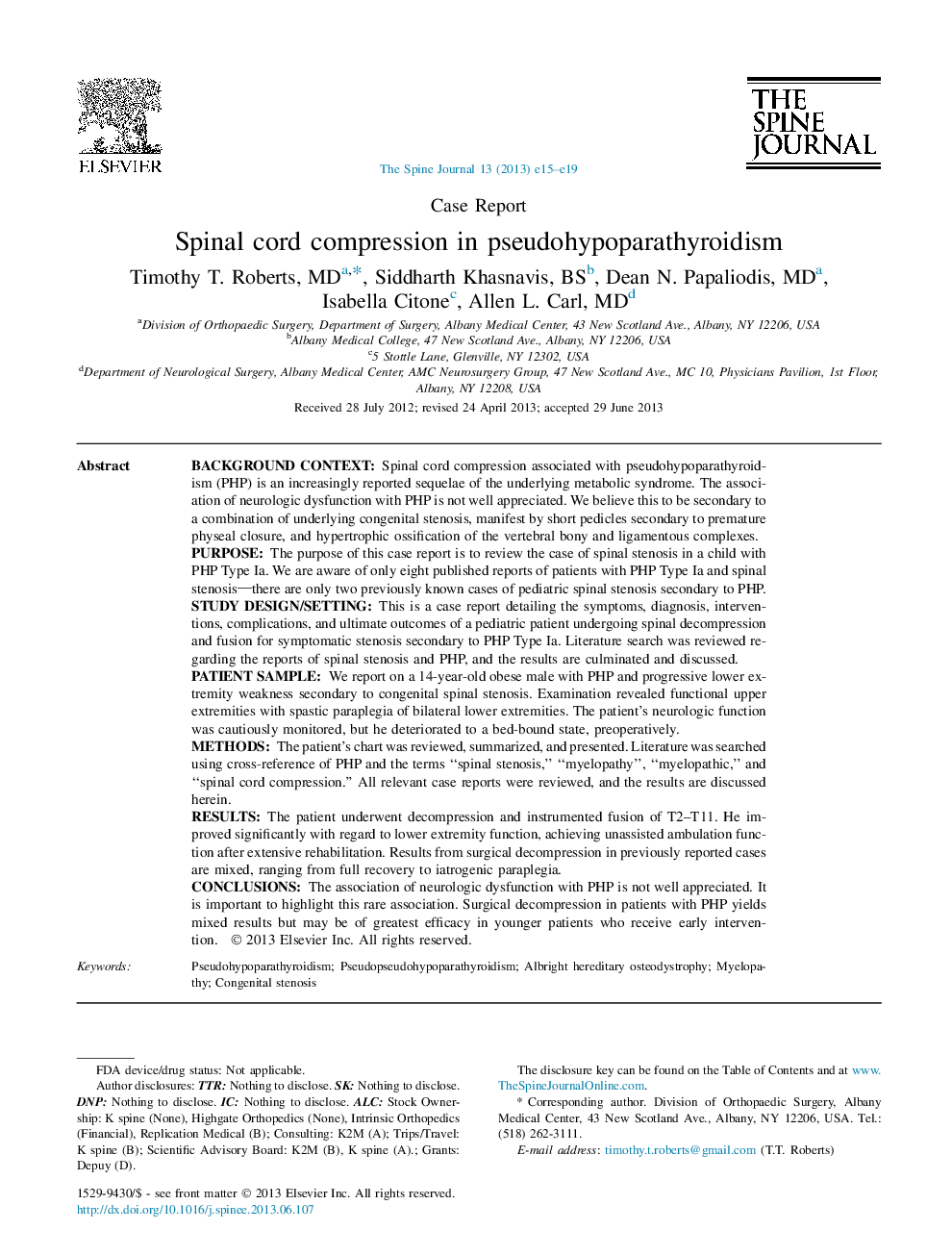| Article ID | Journal | Published Year | Pages | File Type |
|---|---|---|---|---|
| 4096437 | The Spine Journal | 2013 | 5 Pages |
Background contextSpinal cord compression associated with pseudohypoparathyroidism (PHP) is an increasingly reported sequelae of the underlying metabolic syndrome. The association of neurologic dysfunction with PHP is not well appreciated. We believe this to be secondary to a combination of underlying congenital stenosis, manifest by short pedicles secondary to premature physeal closure, and hypertrophic ossification of the vertebral bony and ligamentous complexes.PurposeThe purpose of this case report is to review the case of spinal stenosis in a child with PHP Type Ia. We are aware of only eight published reports of patients with PHP Type Ia and spinal stenosis—there are only two previously known cases of pediatric spinal stenosis secondary to PHP.Study design/settingThis is a case report detailing the symptoms, diagnosis, interventions, complications, and ultimate outcomes of a pediatric patient undergoing spinal decompression and fusion for symptomatic stenosis secondary to PHP Type Ia. Literature search was reviewed regarding the reports of spinal stenosis and PHP, and the results are culminated and discussed.Patient sampleWe report on a 14-year-old obese male with PHP and progressive lower extremity weakness secondary to congenital spinal stenosis. Examination revealed functional upper extremities with spastic paraplegia of bilateral lower extremities. The patient's neurologic function was cautiously monitored, but he deteriorated to a bed-bound state, preoperatively.MethodsThe patient's chart was reviewed, summarized, and presented. Literature was searched using cross-reference of PHP and the terms “spinal stenosis,” “myelopathy”, “myelopathic,” and “spinal cord compression.” All relevant case reports were reviewed, and the results are discussed herein.ResultsThe patient underwent decompression and instrumented fusion of T2–T11. He improved significantly with regard to lower extremity function, achieving unassisted ambulation function after extensive rehabilitation. Results from surgical decompression in previously reported cases are mixed, ranging from full recovery to iatrogenic paraplegia.ConclusionsThe association of neurologic dysfunction with PHP is not well appreciated. It is important to highlight this rare association. Surgical decompression in patients with PHP yields mixed results but may be of greatest efficacy in younger patients who receive early intervention.
